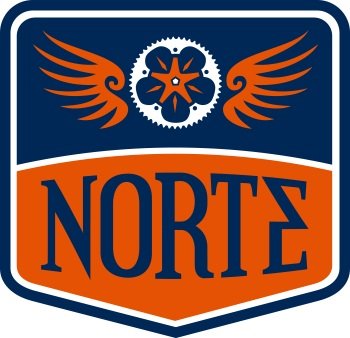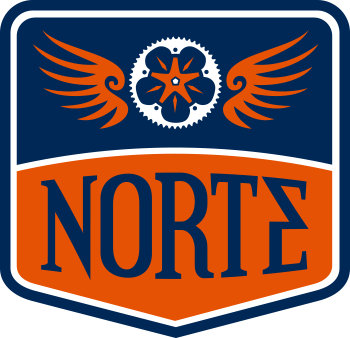The Bike Maintenance Checklist (For Non-bike Mechanics)
Whether you’re a recreational rider or way into racing, bike maintenance is a big part of staying safe. Keeping your bike in prime shape reduces the risk of the dreaded mechanical, lengthens the working life of high-wear components like chains and cassettes, and helps you ride more efficiently. We put together a bike tune-up checklist for the not-so-mechanically inclined to help you tackle accessible adjustments and decide which repairs are best left to the professionals.
The Pre-ride or Race Bike Checklist
It’s always a good idea to give your bike a little extra love in the days leading up to a big ride or race. Training miles add up, contributing to worn-out parts, decreased shifting performance, and even loosening up bolts.
While this checklist won’t replace a full, professional bike tune-up by your local shop, it will help you identify and address problems before your next ride or event. To get started, have a few tools handy:
A full set of Allen keys
A torque wrench
Your floor pump
A few towels or rags you don’t mind getting dirty
Chain lube
Related: Meet Norte’s Chief Bike Mechanic, Tyler Wituszynski
The Bicycle Maintenance Checklist for Everyone
1. The Clean-up
If your bike is really dirty, you may need to wash it outdoors with a hose. Otherwise, use a damp rag or dedicated bike wash product to wipe the bike from top to bottom. Start with a bucket of warm, slightly soapy water and use your rag to wipe from the cleanest parts of the bike (think the top tube, handlebars, seat) to the dirtiest components (the drivetrain, wheels, and underside of the downtube). Give it a rinse, and use a clean towel to dry it off.
Inspect the frame and components for visual signs of wear or damage. It’s especially important to look closer at high-torque areas of carbon frames to look for cracks. These are often located near the bottom bracket, seat post clamp, or seat tube.
2. Tighten Up the Headset and Other Bolts
Hard training miles can cause bolts to loosen over time. Use an Allen key or torque wrench to tighten your headset, which holds your fork and steerer tube firmly into the frame inside the head tube. You can tighten your headset by carefully turning the bolt in the middle of your stem cap until it’s about 6-7 Newton meters (nm); if you don’t have a torque wrench, that’s basically “finger tight and just a bit more.”
Spend a few minutes checking your stem bolts, seat post bolt, and bottle cage bolts as well!
3. Check Your Tires and Wheels
Don’t overlook your tires; they’re where the rubber literally meets the road or trail! Inspect your tires for cracks or cuts. You might also find small stones, bits of metal, or other debris stuck in your tires. Remove them carefully, but monitor the tire closely in case it causes a leak. Removing that debris at home is better than having it come loose during a race or ride!
You’ll likely check your tire pressure again before the event, but use this time to set them at a specific pressure and note if they lose air overnight. If you’re losing 15% or more, you may need to add sealant or replace the tube or valve stem.
Inspect your valve stem and tighten the small nut that keeps the valve closed. If you have tubeless tires, remove both wheels and shake them; you should hear a bit of tubeless sealant sloshing around inside. If you can’t hear it, your sealant is probably dried out and may not fill leaks out on the trail. Add more sealant if you’re comfortable, or have a local shop top you off.
Finally, make sure each quick release or thru-axle is tight. Once those are set, spin the wheel and ensure it’s true, which means there’s no side-to-side wobble. If it doesn’t look right, take it to your local shop for a wheel true.
4. Check Your Drivetrain
Using your Allen key or torque wrench, carefully tighten your chainring bolts and inspect your chainring, chain, cassette, and derailleurs for signs of damage or misalignment. Adjusting derailleurs can be tricky, so feel free to leave that to an experienced mechanic. It’s also a good idea to look at your pedals and ensure they’re tightened to the crank and don’t show signs of play, or side-to-side movement.
5. Check Your Brakes and Brake Pads
Safety starts with stopping. Inspect your brake pads to see how much material is left. For rim brakes, make sure the exposed rubber is at least 1 millimeter taller than the brake cartridge. If the brake pad is worn unevenly, try to adjust it so the pad makes even contact across the surface of the rim; this will improve braking power and keep the pad wearing evenly.
You may need to remove the wheel and the pads to evaluate wear on disc brakes. If you aren’t comfortable with that, don’t worry. You can often tell if your pads are worn out by brake “pull”, or how far you have to squeeze the brakes to get them to work. It might be time for new pads if they feel soft or require a longer pull than normal.
6. Check Your Stuff, Too!
Once you’re confident your bike is in good shape, think about everything you’ll need on race day. Check your seat bag for a spare tube, a hand pump or CO2 inflator, and a multi-tool. You’ll also want to set aside any on-bike nutrition (a.k.a snacks) for the ride and decide how many water bottles you’ll need to stay hydrated.
What If I Need a Little Help?
Traverse City is lucky to have several top-notch bike shops offering professional tune-ups and repairs. Stop by the Community Bike Shop if you want to learn how to maintain your bike or feel more comfortable making routine repairs. We provide access to all the tools you need to keep your bike riding smooth, plus expert pointers from our Chief Bike Mechanic, Tyler. We also offer winter and spring bike repair classes!
Norte Youth Cycling supports healthy, active communities across northern Michigan. Learn more about our work and consider donating to the cause. Make sure you sign up for our weekly newsletter, too!


